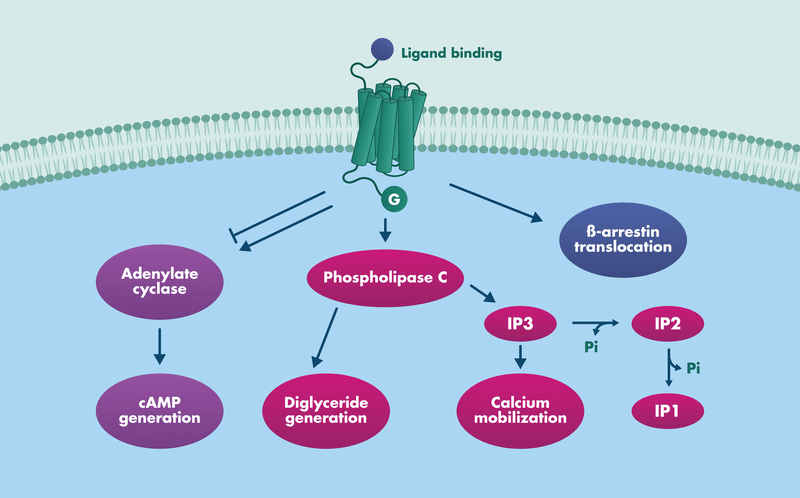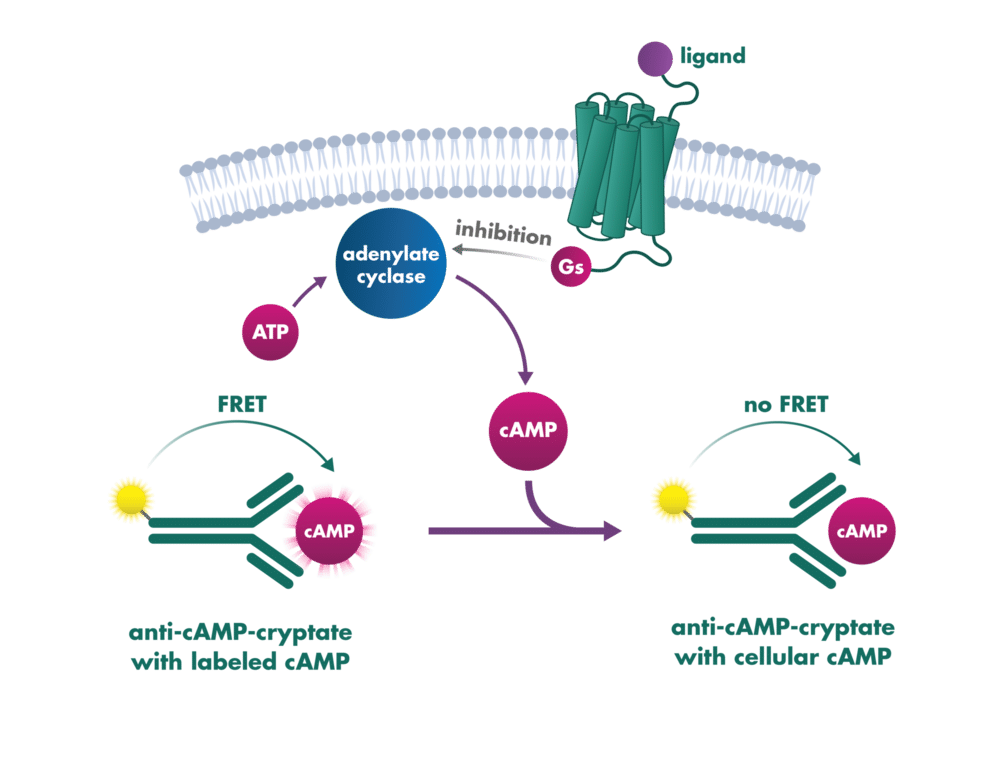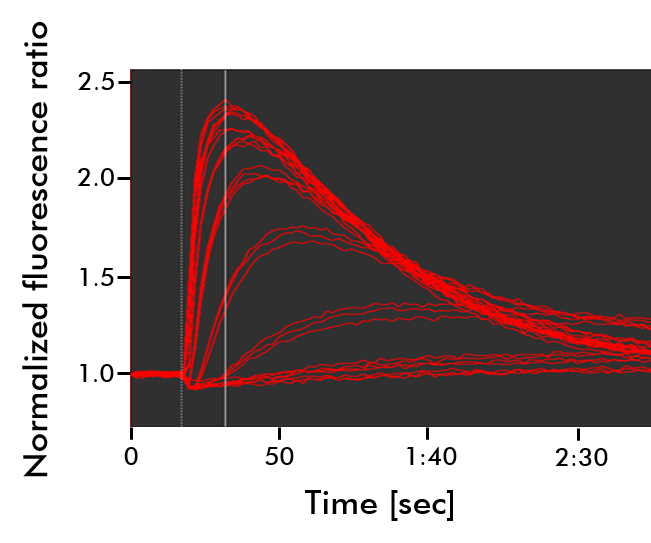GPCR Assays
G protein-coupled receptors (GPCR) represent the largest individual family of targets for currently approved medications. Recent advances in GPCR pharmacology, including biased signaling and allosteric modulators, have become increasingly important tools for GPCR assay development. Reaction Biology offers GPCR screening services to progress drug discovery research in the area of GPCR biology and pharmacology.
- We offer GPCR assay development, high-throughput screening, and SAR support services.
- Transmembrane signaling assay formats can be readily established for your receptor of interest including calcium mobilization, ß-arrestin translocation, cAMP generation, and inositol 1-monophosphate (IP1) generation









